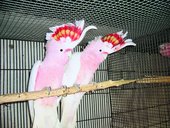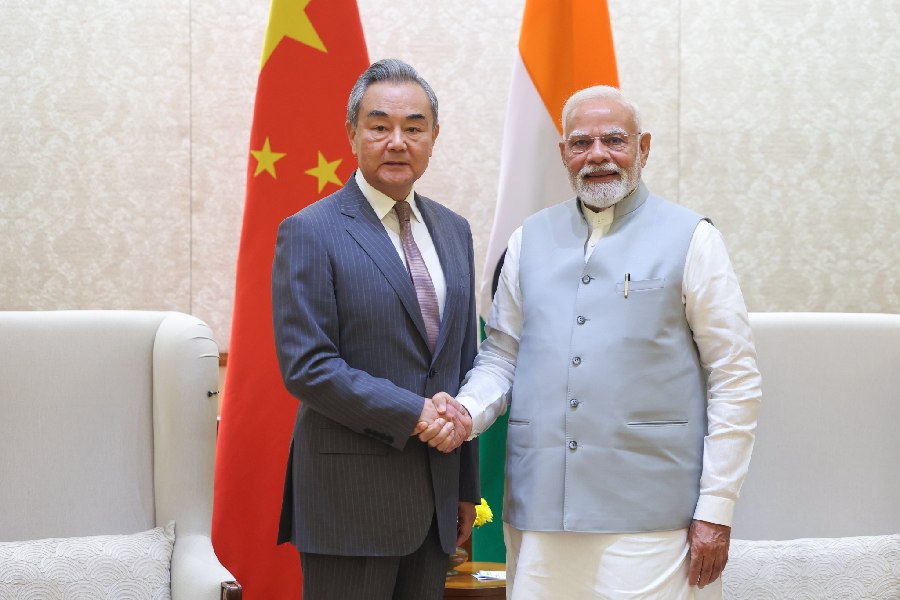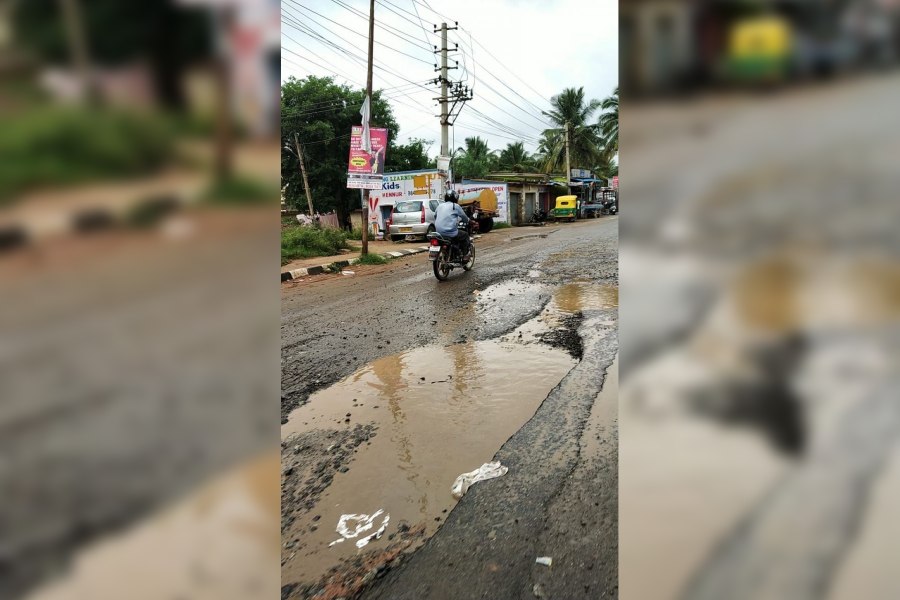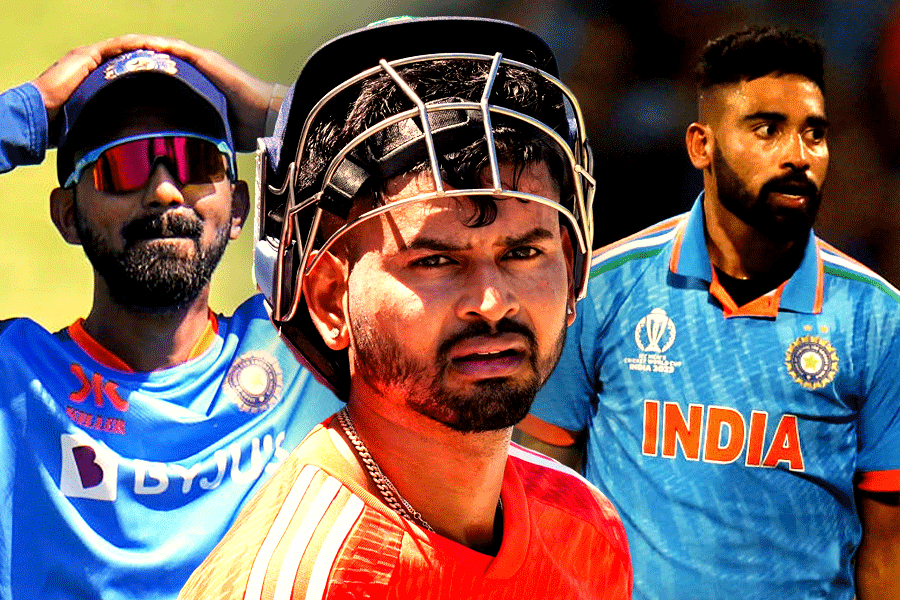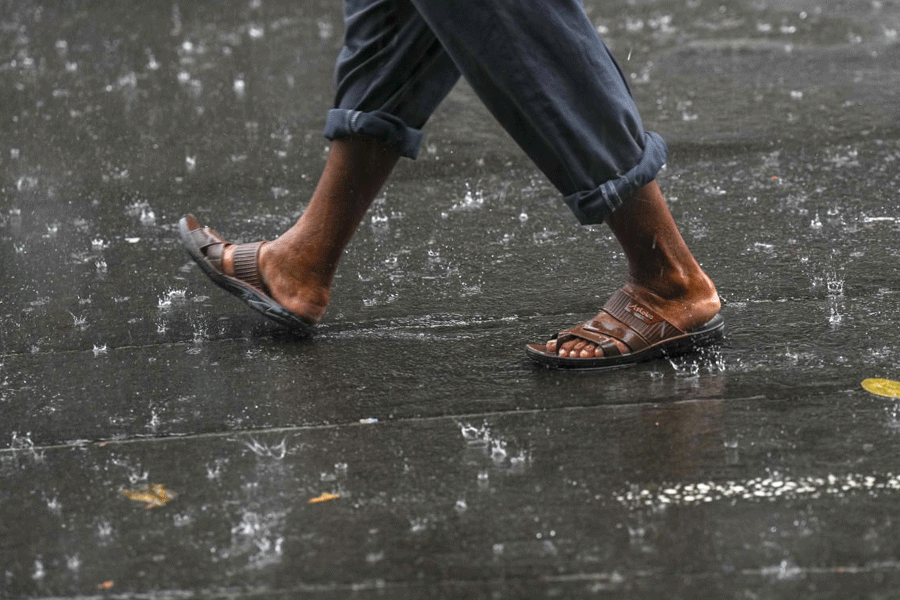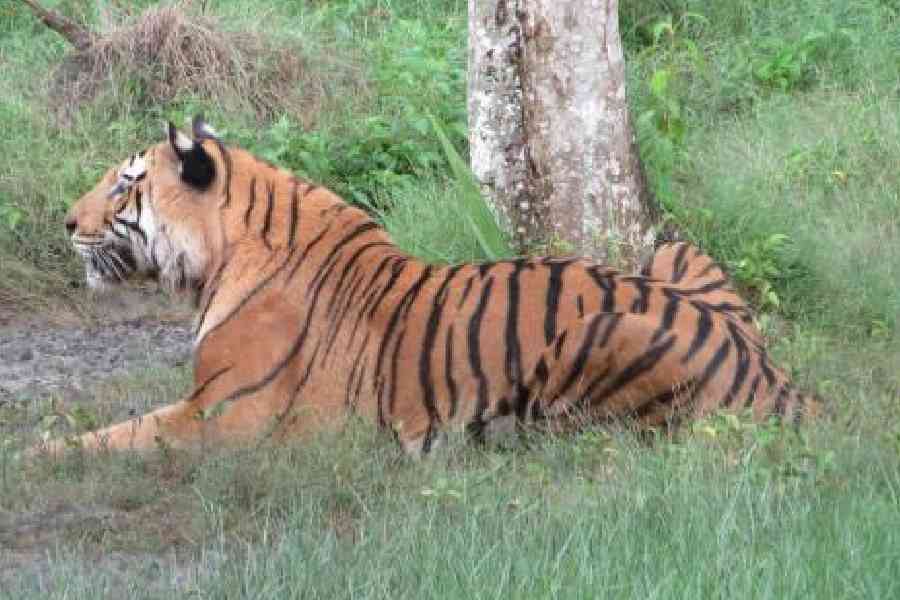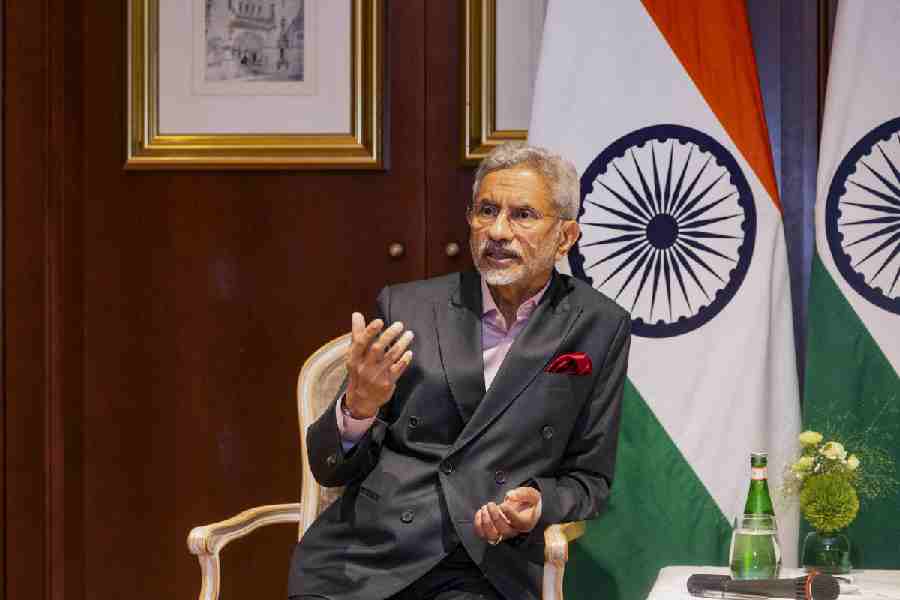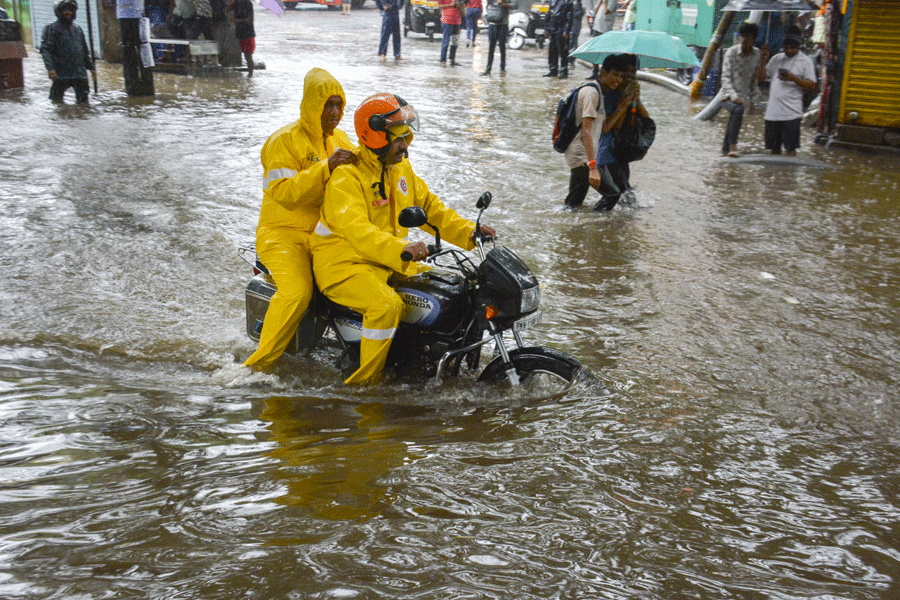The hyacinth macaw is a striking bird. Brilliant blue in colour, the largest macaw species, native to South America, is a dream for a bird owner. A pair costs about Rs 18 lakh — a little less than a C-class Mercedes — and the birds can’t even fly. The price is higher for a true breeding pair, a pair whose compatibility ensures that they will mate.
 |
| Major Mitchell’s cockatoo |
 |
| Scarlet macaw |
 |
| Galah |
 |
| Blue-gold macaw |
 |
| Hyacinth macaw |
It’s easy to get a budgerigar, a Java sparrow, a lovebird, a captive-bred Gouldian finch or a rosella on any given Sunday from Galiff Street. But away from the marketplace, in select homes, a small, exclusive bird market has been flourishing for years in the city.
It is the market of beautiful, rare, foreign birds, which fetch the most astounding prices. Calcutta is a hub of collectors and breeders of high-end exotic birds. Avinandan Mitra, a chartered and cost accountant, is one of them. His house near Rashbehari Avenue is known as pakhir bari (bird house) in the area because of the constant chirping that can be heard even from a distance. Mitra spends Rs 15,000 every month on the maintenance of his birds.
Mitra once owned a pair of hyacinth macaws, but he sold them to a collector outside the city for an “undisclosed” amount. Since then no hyacinth macaw is to be found in a city home, but Mitra has much else to show.
He owns a pair of blue-and-gold macaws, worth Rs 1.5 lakh and a pair of galahs — with a white crown and a lovely pink crest — that can fetch up to Rs 3 lakh for an adult pair.
His collection also includes several colour-mutated ringneck parakeets, the albino variety of which can cost Rs 35,000 a pair. The mutated varieties are created by selective breeding of certain species to produce colours that are not found in the wild.
Close to Mitra, in Dhakuria, Debabrata Biswas, a businessman and pet bird enthusiast, keeps seven cockatoos in his house, including a greater sulphur-crested, a citron-crested and an umbrella-crested cockatoo. A blue-gold macaw keeps them company.
Mitra and Biswas are part of a close-knit community of breeders and sellers of rare birds in the city, who are in touch with breeders and sellers in other parts of the country.
Charanjit Singh has several African grey parrots, said to have the intelligence of a five-year-old, at about Rs 30,000 a pair, which he has decided not to sell, but keep for breeding. He talks about a bird owner in the city who has hatched four clutches of African grey chicks in nine months. That’s quite rare, he says.
However, most owners of high-end birds are tight-lipped about the trade, for many of these species are brought into the country illegally, exploiting loopholes in the law.
For, though it is illegal to capture, keep, trade or breed any Indian bird (except the blue rock pigeon and the crow — not really the first choice for a pet) under the Wildlife Protection Act, 1972, it is far easier to deal in foreign birds.
There are no specific laws on the trade of foreign birds in India. The country is a signatory to the Convention on International Trade in Endangered Species (CITES), but that has done precious little to curb the illegal trade.
“CITES lays down guidelines for the trade in exotic birds. But India has no legislation to enforce the guidelines,” says R.K. Samal, the regional deputy director of the wildlife crime control bureau in Calcutta. So trade in foreign birds is governed by the export and import policy.
As matters stand, any foreign bird can be brought into the country, provided the country of its origin allows it. The bird has to be accompanied by either a CITES certificate or a no- objection certificate from the regional deputy director of the wildlife wing. The species also cannot be listed in Appendix I of CITES, which names the most endangered species.
The most expensive of the lot — the hyacinth macaw — is an Appendix 1 bird, as well as the lesser sulphur- crested cockatoo. According to Samir Sinha, the India head of wildlife trade monitoring network Traffic, the owner of an Appendix 1 bird, even if it is cage-bred in India, can be penalised and the bird seized unless he has the necessary documents, including CITES permits.
Yet smuggling is rampant. Why? The answer lies in the cumbersome process of getting clearance from the country of origin. Moreover, if the birds can be smuggled in, it is not difficult to pass them off as captive-breds.
According to CITES records, 150 Jardine’s parrots (also called red-fronted parrots) were imported to India in 2007 from The Democratic Republic of Congo. Worth around Rs 5,000 a pair, the bird is listed in Appendix II of the agreement, which means it’s not illegal to import it provided the paperwork is in place. “This particular trade was reported as a legal import but there may be several such consignments entering the country illegally,” says Sinha.
Calcutta is an important centre of aviculture, with as many as 6,000 breeders of foreign birds, according to Pranab Mitra, the secretary of the Bird Breeders and Lovers’ Association of Calcutta. The bulk of the trade is in birds whose prices vary from Rs 85 to Rs 6,000 a pair. These birds, including budgerigars and lovebirds, have become domesticated through several centuries of being bred in cages and are now easily available.
Because of the absence of clear guidelines and its location, Calcutta is also an important centre of smuggled expensive birds. Breeders can give a voluntary declaration of their stock to the regional deputy director of the wildlife crime control bureau. But no record is maintained of exotic birds present in India.
“Birds that are difficult to breed in captivity are smuggled,” says Abrar Ahmed, a consultant with WWF India and Traffic, who has studied the bird trade in India for the past 10 years.
“Calcutta is an important transit point for the illegal entry of exotic birds into India from Bangladesh,” he says. The other route is from Nepal to Patna, from where they are distributed to other parts of the country.
A number of exotic varieties are sourced from The Netherlands and Australia, and are mostly shipped and then brought by road.
Many of the birds do not survive the trauma of transit. “The higher degree of concealment increases mortality,” says Ahmed. The illegal importers also bypass vaccination norms. “Imported birds, if not properly vaccinated and quarantined, can become carriers of avian diseases, infecting other birds they come in contact with,” says Sinha.
“While there is no authentic estimation of the actual value of the illegal wildlife trade in India, it clearly runs into several millions of dollars annually,” says Sinha. The birds are valued for their rarity, talking abilities and attractive plumage.
The ban on trade of Indian wild birds came into effect in 1989, making it an offence to trap or keep such birds. But the ban did little to reduce the demand for these colourful creatures. Rather, the interest shifted to exotic species.
“The smuggling of birds has high returns, with limited chances of being caught by enforcement agencies and if caught, an even lesser chance of conviction,” points out Sinha.
Many illegally imported birds find their way into the country because customs officials are not trained to identify them. “The birds are imported illegally also to serve as founder populations, whose offspring may later enter the ‘legal trade’,” explains Sinha.
But there is no way of distinguishing an exotic bird that has been imported illegally from one that has been bred here, he adds. “If we restrict ourselves to cage-bred birds, it would go a long way in preventing poaching and conserving bird numbers,” says Ahmed.
Despite the legal lacunae, some action has been taken. “The CITES management authority of India mentions in its 2006 annual report the seizure of African grey parrots, blue-gold macaws, Senegal parrots and Moluccan cockatoos from a person in Mumbai,” says Sinha.
Calcutta is sure to have illegal birds too. But it is near impossible to access this data from the CITES personnel in the state wildlife wing, who cite lack of information and point towards New Delhi.
The breeders, meanwhile, keep a count. The city has “three or four pairs” of scarlet macaws that cost about Rs 4.5 lakh a pair, says Mitra. The speculation on the prices continues.
A rare Major Mitchell’s cockatoo, also known as the Leadbeater’s cockatoo, originally from the arid regions of Australia, may cost anything above Rs 10 lakh. “There is no fixed rate as there are so few of them. The price depends on how much a person can pay. But it is certainly more than Rs 10 lakh,” says a city breeder. With its white and salmon pink plumage and bright red-and-yellow crest, it is evident why.
“My brother had a pair until three years ago; he sold it to a collector in Bangalore,” says Mitra. He is unwilling to disclose the amount paid. There are “five or six pairs in India, of which three are in New Delhi,” Mitra says.
winged wows
![]() Hyacinth macaw: Rs 18 lakh
Hyacinth macaw: Rs 18 lakh
![]() Yellow collar macaw/cockatoo: Rs 6 to 8 lakh
Yellow collar macaw/cockatoo: Rs 6 to 8 lakh
![]() Scarlet macaw: Rs 4.5 lakh
Scarlet macaw: Rs 4.5 lakh
![]() Blue-and-gold macaw: Rs 1.5 lakh
Blue-and-gold macaw: Rs 1.5 lakh
![]() Galah: Rs 2.5 to 3 lakh
Galah: Rs 2.5 to 3 lakh
![]() Greater sulphur-crested cockatoo: Rs 85,000
Greater sulphur-crested cockatoo: Rs 85,000
![]() Umbrella-crested cockatoo: Rs 90,000
Umbrella-crested cockatoo: Rs 90,000
![]() African grey parrot: Rs 30,000
African grey parrot: Rs 30,000
(All prices for a pair)

